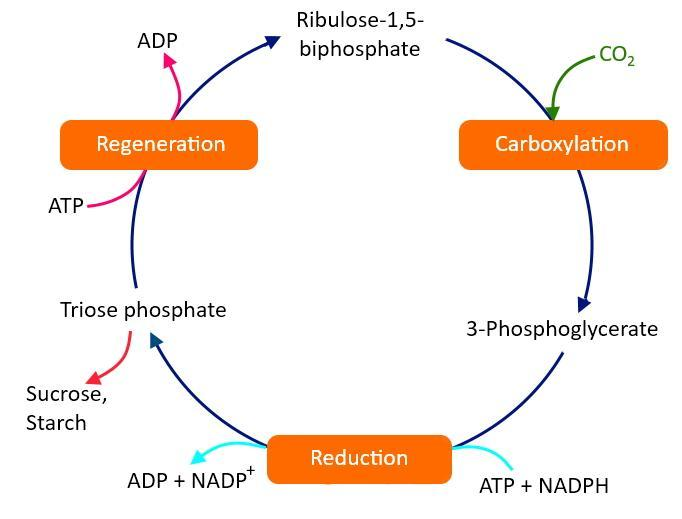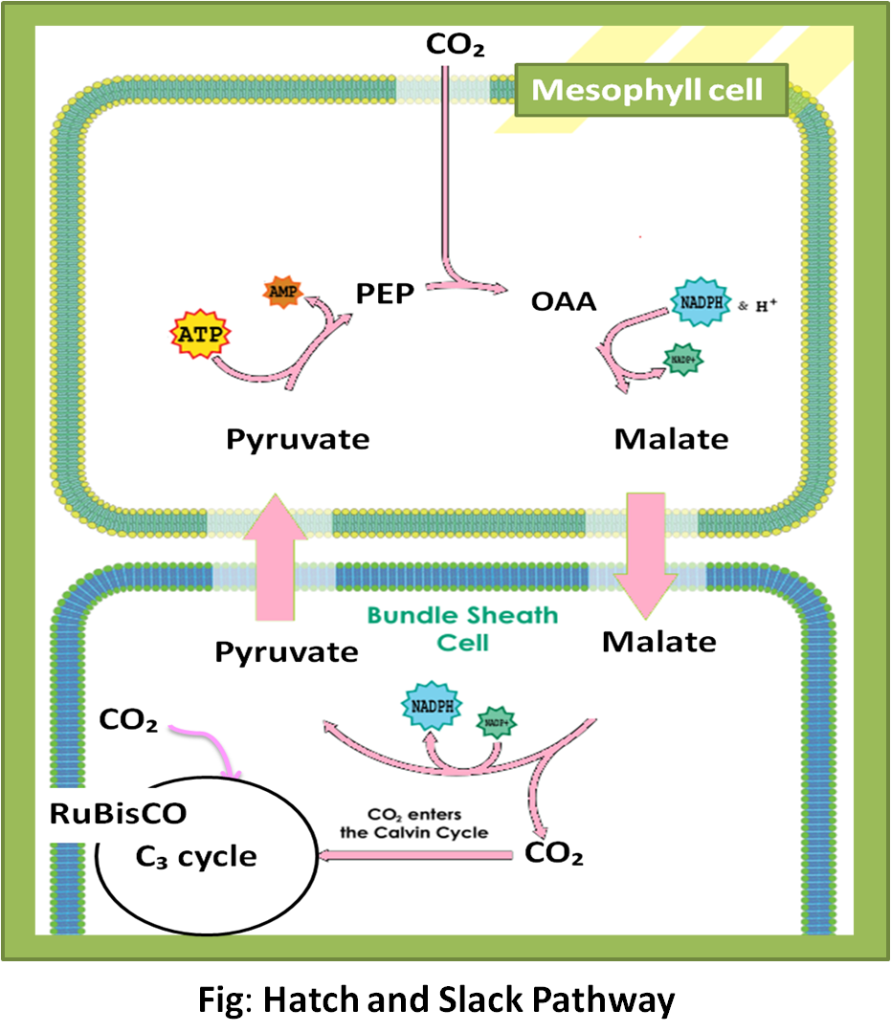
Which is the primary
Answer
450.9k+ views
1 likes
Hint: Plants, which do not have the adaptation to combat photorespiration (a wasteful process), such plants are known as
Complete answer:
The primary
C3 cycle or Calvin cycle: In the Calvin cycle, the carbon dioxide acceptor molecule is RuBP and the enzyme catalyzing this reaction is RuBP carboxylase. In this process, the reduction of carbon dioxide gives the first stable product, a three-carbon compound, which is 3-phosphoglyceric acid or 3PGA. The plant which follows the
First reaction of

Figure: Complete the
The first reaction of the

Additional Information:
Photorespiration: It is a reverse process as compared to photosynthesis. It involves the uptake of
Photorespiration is a wasteful process because no energy-rich compound is produced and loss of carbon takes place during such a process. This process has a significant impact on
Note:
- The leaves of
- The leaves of
Complete answer:
The primary
C3 cycle or Calvin cycle: In the Calvin cycle, the carbon dioxide acceptor molecule is RuBP and the enzyme catalyzing this reaction is RuBP carboxylase. In this process, the reduction of carbon dioxide gives the first stable product, a three-carbon compound, which is 3-phosphoglyceric acid or 3PGA. The plant which follows the
First reaction of

Figure: Complete the
The first reaction of the

Additional Information:
Photorespiration: It is a reverse process as compared to photosynthesis. It involves the uptake of
Photorespiration is a wasteful process because no energy-rich compound is produced and loss of carbon takes place during such a process. This process has a significant impact on
Note:
- The leaves of
- The leaves of
Latest Vedantu courses for you
Grade 11 Science PCM | CBSE | SCHOOL | English
CBSE (2025-26)
School Full course for CBSE students
₹41,848 per year
Recently Updated Pages
Master Class 11 Business Studies: Engaging Questions & Answers for Success

Master Class 11 Economics: Engaging Questions & Answers for Success

Master Class 11 Accountancy: Engaging Questions & Answers for Success

Master Class 11 Computer Science: Engaging Questions & Answers for Success

Master Class 11 English: Engaging Questions & Answers for Success

Master Class 11 Maths: Engaging Questions & Answers for Success

Trending doubts
Which one is a true fish A Jellyfish B Starfish C Dogfish class 11 biology CBSE

Difference Between Prokaryotic Cells and Eukaryotic Cells

1 ton equals to A 100 kg B 1000 kg C 10 kg D 10000 class 11 physics CBSE

1 Quintal is equal to a 110 kg b 10 kg c 100kg d 1000 class 11 physics CBSE

One Metric ton is equal to kg A 10000 B 1000 C 100 class 11 physics CBSE

How much is 23 kg in pounds class 11 chemistry CBSE




